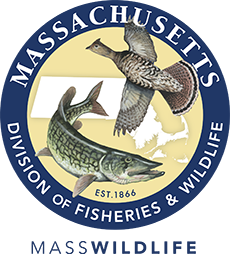- Division of Fisheries and Wildlife
Media Contact
Media Contact, MassWildlife

Video: The legacy of a log: Trail camera video at Unkety Brook WMA
Skip this video The legacy of a log: Trail camera video at Unkety Brook WMA.“If a tree falls in the forest and no one is around to hear it, does it really make a sound?”
While we may not have the answer to this age-old question, it’s clear that fallen trees make a big difference to wildlife whether someone hears it or not! This is especially true for trees that fall around brooks, streams, and rivers. Trees that grow close to water, like red maples, naturally fall into or across water over time. While it may look messy to people, dead wood in an ecosystem can create high-quality habitat conditions for both terrestrial and aquatic critters. Logs in moving water can slow down water flow, making pockets where nutrients can gather for algae and plants to grow and where fish can rest or stay cool while hiding from predators. Dead wood at the surface of water provides the perfect place for turtles to bask in the sun or for birds to perch and feed. Fallen logs spanning brooks, streams, and rivers create natural highways for wild animals of all sizes to cross and access more suitable habitat. “Tip ups”, or root structures that are exposed when a tree falls, are sometimes used by ground nesting bees and other invertebrates. Leaving fallen trees when there’s no risk to public safety can offer food, shelter, and habitat connectivity to all sorts of wildlife.
Retired science teacher, Michael V., captured the incredible influence of a fallen tree over a brook in MassWildlife’s Unkety Brook Wildlife Management Area in Dunstable. Watch the short video above to see who visited the log crossing over the last year!
Read next: Find out how wood in streams can benefit fish and aquatic ecosystems.
